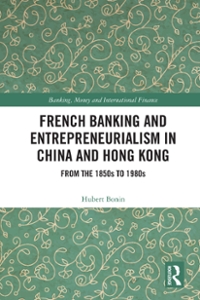Question
33) Which of these increases productivity? a) an increase in skills in the labor force b) a poorly educated labor force c) a large labor
33) Which of these increases productivity?
a) an increase in skills in the labor force
b) a poorly educated labor force
c) a large labor force
d) a young labor force
35) Cost-push inflation is a situation in which the:
a) aggregate demand curve shifts leftward.
b) short-run aggregate supply curve shifts leftward.
c) aggregate demand curve shifts rightward.
d) short-run aggregate supply curve shifts rightward.
36) Which factor is LEAST likely to cause a decrease in aggregate demand?
a) increase in government spending
b) increase in interest rates
c) increase in consumer debt
d) increase in business taxes
37) The oil shock of 1973 led to demand-pull inflation.
a) False
b) True
38) If the government of Econia raises the minimum wage, what impact will this have on the average price level and output level of the country?
a) It will shift the short-run aggregate supply curve to the left, leading to a lower price level and higher output.
b) It will shift the short-run aggregate supply curve to the right, leading to a lower price level and higher output.
c) It will shift the short-run aggregate supply curve to the right, leading to a higher price level and lower output.
d) It will shift the short-run aggregate supply curve to the left, leading to a higher price level and lower output.
39) Cost-push inflation occurs when:
a) total spending expands so much that equilibrium output exceeds full-employment output.
b) rising resource costs reduce short-run aggregate supply.
c) subsidies to businesses rise.
d) a supply shock shifts the short-run aggregate supply curve to the right.
40) Consumer spending is NOT affected by:
a) wealth.
b) consumer confidence.
c) inventories.
d) taxes.
41) Checking accounts are counted as part of:
a) M1 only.
b) M2 and near money only.
c) M2 only.
d) M1 and M2.
42) Which of these statements about dollar coins is correct?
a) The Mint suspended the issuance of the Susan B. Anthony dollar coin when the presidential dollar coin was introduced.
b) The use of dollar coins as a medium of exchange never caught on.
c) Dollar banknotes are more durable than dollar coins.
d) In recent years, the U.S. Treasury introduced the Susan B. Anthony dollar coin and the Pocahontas dollar coin.
43) Which asset has the HIGHEST liquidity?
a) a Rembrandt painting
b) deposits in a savings account
c) 500 shares of Apple stock
d) a vacation home
45) Barter:
a) works as well as money in all cases.
b) involves a double coincidence of wants if an exchange takes place.
c) serves as store of value in primitive societies.
d) is any exchange, with or without the presence of money, in which the participants negotiate the terms of trade.
47) When liabilities exceed assets, a bank has negative equity.
a) False
b) True
48) If a bank is subject to a reserve requirement of 3% and its reserve ratio is 1%, this bank is considered highly liquid.
a) True
b) False
49) There are _____ Regional Federal Reserve Banks; the only Regional Bank president who is a permanent member of the Federal Open Market Committee is based in _____.
a) 7; San Francisco
b) 12; New York
c) 7; New York
d) 12; San Francisco
50) The main tool of monetary policy is:
a) the reserve requirement.
b) open market operations.
c) the discount rate.
d) capital gains taxes.
Step by Step Solution
There are 3 Steps involved in it
Step: 1

Get Instant Access to Expert-Tailored Solutions
See step-by-step solutions with expert insights and AI powered tools for academic success
Step: 2

Step: 3

Ace Your Homework with AI
Get the answers you need in no time with our AI-driven, step-by-step assistance
Get Started


